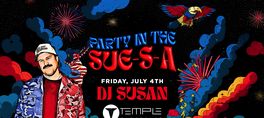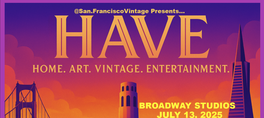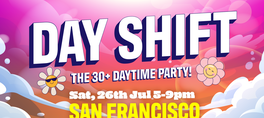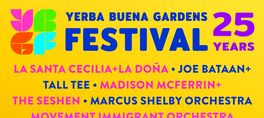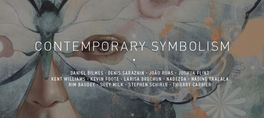May 8 - July 3, 2025, Tuesday - Saturday, 10:00am - 5:30pm
Modernism's 9th survey of seminal French contemporary artist Jacques Villegle [1926-2022] examines 25 decollage masterpieces by the influential Nouveau Realiste, through the lens of typography.
Villegle spent most of his life wandering the streets of Paris, pulling torn advertising posters off the ancient walls and pronouncing them Art. "In seizing a poster, I seize history, he says. "What I gather is the reflection of an era."
In 1949, Villegle began scavenging advertising from billboards on the grand boulevards, snatching political posters in the financial district, and pillaging Left Bank walls plastered with flyers for jazz concerts and art exhibitions. Villegle recalled, "In those days, the cinema and concert posters rarely had images, just words, and they had been torn and shredded to where they became something else, with a post-cubist look to them. Early on I believed that letters gave structure to posters on an abstract level, and I looked for that in the posters I took." Mounting them on canvas, he presented them as a new kind of art. Between 1949 and 2003, Villegle plucked more than 4,500 works from all twenty of Paris's arrondissements, carefully labeling each with the exact date and street address of the poster's origin. Each work became a unique time capsule of the ever-changing city.
"I realized right from the start that lettering would change, that new colors would be developed, that photography would be employed someday. Electric blue didn't exist, for instance. So right from the beginning I saw this material would be historic and would constitute an archive, a ragged memory of our era."
Villegle's work has been exhibited internationally, and is the collections of many museums worldwide (MOMA, NY; MOCA, LA; Detroit Institute of Arts; Centre Georges Pompidou, Paris; Tate Gallery, London; Moderna Museet, Stockholm; Musee d'Israel, Jerusalem). In 2008 a major retrospective of his works was exhibited at the Centre Georges Pompidou.
Free
Presented by MODERNISM INC..
show less
Modernism's 9th survey of seminal French contemporary artist Jacques Villegle [1926-2022] examines 25 decollage masterpieces by the influential Nouveau Realiste, through the lens of typography.
Villegle spent most of his life wandering the streets of Paris, pulling torn advertising posters off the ancient walls and pronouncing them Art. "In seizing a poster, I seize history, he says. "What I gather is the reflection of an era."
In 1949, Villegle began scavenging advertising from billboards on the grand boulevards, snatching political posters in the financial district, and pillaging Left Bank walls plastered with flyers for jazz concerts and art exhibitions. Villegle recalled, "In those days, the cinema and concert posters rarely had images, just words, and they had been torn and shredded to where they became something else, with a post-cubist look to them. Early on I believed that letters gave structure to posters on an abstract level, and I looked for that in the posters I took." Mounting them on canvas, he presented them as a new kind of art. Between 1949 and 2003, Villegle plucked more than 4,500 works from all twenty of Paris's arrondissements, carefully labeling each with the exact date and street address of the poster's origin. Each work became a unique time capsule of the ever-changing city.
"I realized right from the start that lettering would change, that new colors would be developed, that photography would be employed someday. Electric blue didn't exist, for instance. So right from the beginning I saw this material would be historic and would constitute an archive, a ragged memory of our era."
Villegle's work has been exhibited internationally, and is the collections of many museums worldwide (MOMA, NY; MOCA, LA; Detroit Institute of Arts; Centre Georges Pompidou, Paris; Tate Gallery, London; Moderna Museet, Stockholm; Musee d'Israel, Jerusalem). In 2008 a major retrospective of his works was exhibited at the Centre Georges Pompidou.
Free
Presented by MODERNISM INC..
May 8 - July 3, 2025, Tuesday - Saturday, 10:00am - 5:30pm
Modernism's 9th survey of seminal French contemporary artist Jacques Villegle [1926-2022] examines 25 decollage masterpieces by the influential Nouveau Realiste, through the lens of typography.
Villegle spent most of his life wandering the streets of Paris, pulling torn advertising posters off the ancient walls and pronouncing them Art. "In seizing a poster, I seize history, he says. "What I gather is the reflection of an era."
In 1949, Villegle began scavenging advertising from billboards on the grand boulevards, snatching political posters in the financial district, and pillaging Left Bank walls plastered with flyers for jazz concerts and art exhibitions. Villegle recalled, "In those days, the cinema and concert posters rarely had images, just words, and they had been torn and shredded to where they became something else, with a post-cubist look to them. Early on I believed that letters gave structure to posters on an abstract level, and I looked for that in the posters I took." Mounting them on canvas, he presented them as a new kind of art. Between 1949 and 2003, Villegle plucked more than 4,500 works from all twenty of Paris's arrondissements, carefully labeling each with the exact date and street address of the poster's origin. Each work became a unique time capsule of the ever-changing city.
"I realized right from the start that lettering would change, that new colors would be developed, that photography would be employed someday. Electric blue didn't exist, for instance. So right from the beginning I saw this material would be historic and would constitute an archive, a ragged memory of our era."
Villegle's work has been exhibited internationally, and is the collections of many museums worldwide (MOMA, NY; MOCA, LA; Detroit Institute of Arts; Centre Georges Pompidou, Paris; Tate Gallery, London; Moderna Museet, Stockholm; Musee d'Israel, Jerusalem). In 2008 a major retrospective of his works was exhibited at the Centre Georges Pompidou.
Free
Presented by MODERNISM INC..
read more
Modernism's 9th survey of seminal French contemporary artist Jacques Villegle [1926-2022] examines 25 decollage masterpieces by the influential Nouveau Realiste, through the lens of typography.
Villegle spent most of his life wandering the streets of Paris, pulling torn advertising posters off the ancient walls and pronouncing them Art. "In seizing a poster, I seize history, he says. "What I gather is the reflection of an era."
In 1949, Villegle began scavenging advertising from billboards on the grand boulevards, snatching political posters in the financial district, and pillaging Left Bank walls plastered with flyers for jazz concerts and art exhibitions. Villegle recalled, "In those days, the cinema and concert posters rarely had images, just words, and they had been torn and shredded to where they became something else, with a post-cubist look to them. Early on I believed that letters gave structure to posters on an abstract level, and I looked for that in the posters I took." Mounting them on canvas, he presented them as a new kind of art. Between 1949 and 2003, Villegle plucked more than 4,500 works from all twenty of Paris's arrondissements, carefully labeling each with the exact date and street address of the poster's origin. Each work became a unique time capsule of the ever-changing city.
"I realized right from the start that lettering would change, that new colors would be developed, that photography would be employed someday. Electric blue didn't exist, for instance. So right from the beginning I saw this material would be historic and would constitute an archive, a ragged memory of our era."
Villegle's work has been exhibited internationally, and is the collections of many museums worldwide (MOMA, NY; MOCA, LA; Detroit Institute of Arts; Centre Georges Pompidou, Paris; Tate Gallery, London; Moderna Museet, Stockholm; Musee d'Israel, Jerusalem). In 2008 a major retrospective of his works was exhibited at the Centre Georges Pompidou.
Free
Presented by MODERNISM INC..
show less
Date/Times:
724 Ellis Street, San Francisco, CA 94121
The Best Events
Every Week in Your Inbox
From Our Sponsors
UPCOMING EVENTS
Great suggestion! We'll be in touch.
Event reviewed successfully.


